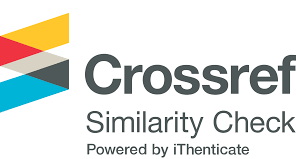Một phương pháp thiết kế ngữ nghĩa dạng tập mờ của từ ngôn ngữ dựa trên đại số gia tử mở rộng và ứng dụng xây dựng FRBS giải bài toán hồi qui
Abstract
Trong bài báo này, chúng tôi đề xuất một phương pháp thiết kế ngữ nghĩa dạng tập mờ bằng hàm S và đại số gia tử mở rộng cho các từ ngôn ngữ sử dụng trong các hệ dựa trên các luật mờ (FRBS). Áp dụng phương pháp thiết kế này, phương pháp sinh luật từ dữ liệu của C. H. Nguyen và cộng sự và thuật toán tiến hóa (2+2)M-PAES của Knowles và Corne, chúng tôi phát triển một thuật toán xây dựng các FRBS giải bài toán hồi qui. Kết quả thử nghiệm cho thấy thuật toán sinh ra các FRBS có độ chính xác cao hơn các thuật toán được đối sánh.References
D. Vukadinovic, M. Basic, C. H. Nguyen, N. L. Vu, and T. D. Nguyen, “Hedge-algebra-based voltage controller for a selfexcited induction generator,” Control Engineering Practice, vol. 30, pp. 78–90, 2014.
H. Ishibuchi and Y. Nojima, “Analysis of interpretabilityaccuracy tradeoff of fuzzy systems by multiobjective fuzzy genetics-based machine learning,” International Journal of Approximate Reasoning, vol. 44, no. 1, pp. 4–31, 2007.
H. Ishibuchi and Y. Nojima, “Repeated double cross-validation for choosing a single solution in evolutionary multi-objective fuzzy classifier design,” Knowledge-Based Systems, vol. 54, pp. 22–31, 2013.
C. H. Nguyen, W. Pedrycz, T. L. Duong, and T. S. Tran, “A genetic design of linguistic terms for fuzzy rule based classifiers,” International Journal of Approximate Reasoning, vol. 54, no. 1, pp. 1–21, 2013.
C. H. Nguyen, T. S. Tran, and D. P. Pham, “Modeling of a semantics core of linguistic terms based on an extension of hedge algebra semantics and its application,” KnowledgeBased Systems, vol. 67, pp. 244–262, 2014.
C. H. Nguyen, V. T. Hoang, and V. L. Nguyen, “A discussion on interpretability of linguistic rule based systems and its application to solve regression problems,” Knowledge-Based Systems, vol. 88, pp. 107–133, 2015.
R. Alcalá, P. Ducange, F. Herrera, B. Lazzerini, and F. Marcelloni, “A multiobjective evolutionary approach to concurrently learn rule and data bases of linguistic fuzzy-rule-based systems,” IEEE Transactions on Fuzzy Systems, vol. 17, no. 5, pp. 1106–1122, 2009.
M. Antonelli, P. Ducange, B. Lazzerini, and F. Marcelloni, “Learning concurrently data and rule bases of Mamdani fuzzy rule-based systems by exploiting a novel interpretability index,” Soft Computing, vol. 15, no. 10, pp. 1981–1998, 2011.
J. D. Knowles and D. W. Corne, “Approximating the nondominated front using the pareto archived evolution strategy,” Evolutionary Computation, vol. 8, no. 2, pp. 149–172, 2000.
C. H. Nguyen, V. T. Hoang, T. S. Tran, and V. L. Nguyen, “LFoC-Interpretability of Linguistic Rule Based Systems and its Applications To Solve Regression Problems,” International Journal of Computer Technology & Applications, vol. 8, no. 2, pp. 94–117, 2017.
P. Pulkkinen and H. Koivisto, “A dynamically constrained multiobjective genetic fuzzy system for regression problems,” IEEE Transactions on Fuzzy Systems, vol. 18, no. 1, pp. 161–177, 2010.
L. Sadeh, “Fuzzy set,” Information and Control, vol. 8, pp. 338–353, 1965.
N. C. Ho and W. Wechler, “Hedge algebras: an algebraic approach to structure of sets of linguistic truth values,” Fuzzy Sets and Systems, vol. 35, no. 3, pp. 281–293, 1990.
C. Mencar and A. M. Fanelli, “Interpretability constraints for fuzzy information granulation,” Information Sciences, vol. 178, no. 24, pp. 4585–4618, 2008.


